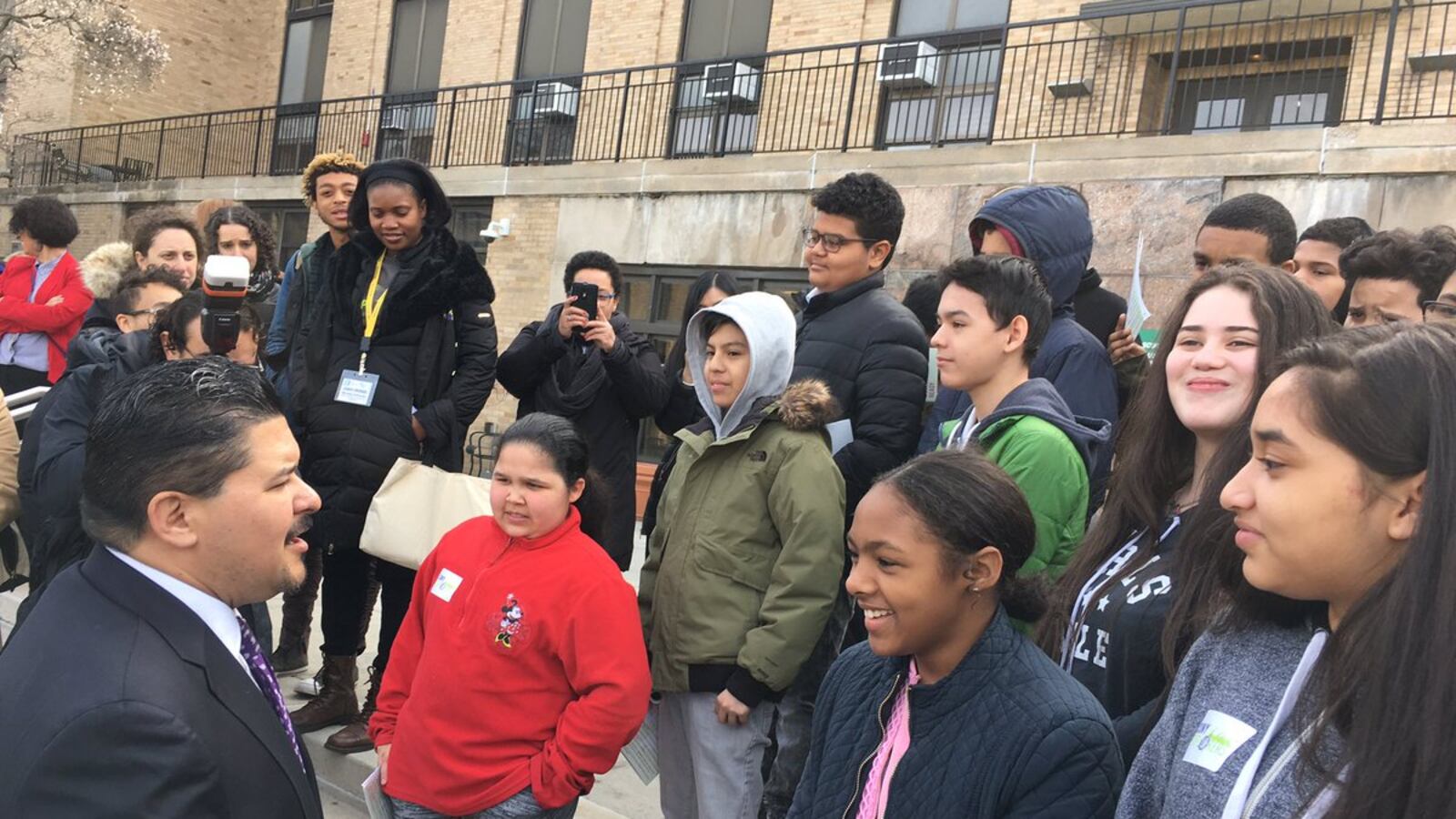To the families protesting, a proposal to accept more low-scoring students into some Upper West Side middle schools is earth-shattering.
To Chancellor Richard Carranza, the plan is “very modest, quite frankly.”
In fact, the city has hard numbers about how many families would potentially lose out because of the proposal. It estimates that 56 fifth-graders would be offered a less-preferred school during the next admissions cycle.
That’s only about 3 percent of the total number of fifth-graders expected to apply for middle schools this fall in District 3, where the proposal would take effect. Eight more students in the district would be shut out completely next year compared to this past year, according to the city’s projections.
“It’s very small numbers,” said Daniel Katz, an education professor who sits on the district’s elected parent council and is supporting the proposal.
Under the plan, which is aimed at making schools more diverse, at least a quarter of seats at the district’s 16 middle schools would be offered to students with low scores on state math and English exams.
The city’s projections show 118 students benefiting from the proposal. That’s how many students would be offered a spot in a higher-ranked school, or get a match rather than be shut out, under the new policy.
The families of students who could be among the 56 sent to schools they prefer less — and not the families more likely to be in the 118 heading to schools they rank higher — have dominated the public conversation, reflecting the very dynamics that the plan’s supporters are trying to shake up. Families of higher-performing students expect to obtain seats in the most sought-after schools, while lower-scoring students have often been denied their top choices by the current admissions policy.
The city’s numbers reveal that reality. This year, 88 percent of District 3 students with top scores on state tests got one of their top three middle school choices. That was true for students with the lowest scores only 55 percent of the time.
Slight tweaks to admissions outcomes for 10 percent of the district’s students would not dramatically reshape the district’s schools. According to the city’s projections, which it has shared at public meetings about the proposal, local schools would still be largely divided between those that serve mostly top-performers and those who serve students with low state test scores.
“The schools that are struggling the most … face almost no demographic change at all,” Katz said.
He said he’d like to see the city do even more to reduce inequities in the district’s schools — and to see families like the ones arguing against the current proposal in a viral NY1 video temper their anxiety.
“I think the parents who are protesting really need to understand what the worst-case scenario really is,” Katz said. “It’s nowhere near as bad as some think it is.”

